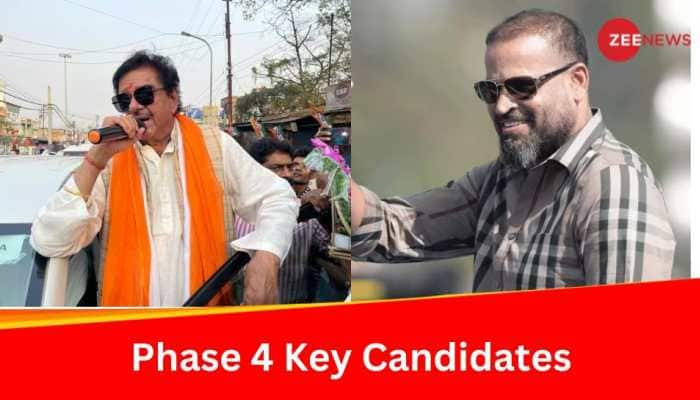Budget on track, but could have been bolder
Pranab`s Budget was high on intention but much less on action... an analysis.
Trending Photos
)
 Akrita Reyar
The Union Budget 2011, presented by Finance Minister Pranab Mukherjee, was high on intention but much less on action. Most of the proposals indicate that thinking for a more transparent and liberalized economy is on track, but implementation remains a question.
To start with the favourite topic of taxation, the FM raised the threshold limit for personal income tax from Rs 1.6 lakh to Rs 1.8 lakh. This was on expected lines, but the limit of exemption that was expected was Rs 2 lakh. That would have given the middle class at least some reason to smile in times when they are facing spiraling rates of food, petrol and other essentials.
There was nothing in the kitty for women, as exemption limit stays at Rs 1, 90,000. Senior citizens have reasons to cheer, more for the age limit for exemption being reduced from 65 to 60 years than the proportion of exemption. That limit has been raised by only Rs 10,000 to Rs 2.5 lakh.
The FM needs a pat on the back particularly for introducing the Very Senior Citizen category for people in the age group of 80 and above who will enjoy an exemption of up to Rs 5 lakh.
The fact that income tax slabs and tax rates remain untouched show that Pranab Mukherjee is serious about the rollout of Direct Tax Code(DTC) from April next year.
Housing sector has been made attractive with 1% interest subvention on loans up to Rs 15 lakh and increasing the loan limit to Rs 25 lakh for priority lending. Cement and Steel price cuts will give a further boost. But increasing deduction on home loan interest to Rs 2.5 lakhs, which was expected, did not come.
On the issue of Black Money, the FM said a five pronged approach will be adopted. The ED strength has been increased three-fold and a commission will study unaccounted wealth, but he announced no audit of even declared incomes of political parties or bigwigs.
While the PM had set off a minor furore when he indicated that the Goods and Services Tax (GST) was facing hurdles from the opposition because the government was pursuing cases against former Gujarat Home Minister Amit Shah, the Finance Minister seems determined to push through GST nationwide. He proposed to maintain the standard rate of Central excise duty at 10% as well as bring 130 items under its ambit that were being charged VAT earlier. Untouched Customs and Excise duties are also in line with the same thinking.
Most of the industry heaved a sigh of relief at taxes not being raised and welcomed the reduction in surcharge from 7.5% to 5%. But many remain sceptical about levy of MAT on developers of Special Economic Zones.
On the positive is the direct cash subsidy to farmers for kerosene, LPG and fertilizer but one wonders, how this would be put into action, considering that simpler schemes like wage disbursement under NREGA are still not streamlined, transparent or reaching the intended beneficiary. But National Food Security will be announced in this session of Parliament.
Pranab’s sixth budget, much like his previous five speeches, was high on social agenda. Rs 58000 crore for Bharat Nirman, Rs 52,000 crore for education, inclusion of all those engaged in the unorganized economy through Rahtritya Swastha Bima Yojana are the policies with their hearts in the right place. Again, proper allocation and utilization is something that the government needs to sort out.
The FM proposed to lower the rate of 15% tax on dividends received by an Indian company from its foreign subsidiary. The increase in FII capital inflow limits as a measure to boost infrastructure funds is a positive move, but once again, not quite enough to undo the current decline in FDI. The measures in Budget did not match Chief Economic Advisor Kaushik Basu’s assessment that there was no "serious worry" on the economy due to slowdown in FDI and excessive FIIs and expect them to be corrected soon.
Foreign direct investment in India in 2010 fell more than 31 percent to USD 24 billion.
A welcome move is the deepening of the debt market by allowing of foreign investment in mutual funds, including by retail investors. The market also reacted positively after cap on foreign investments in infrastructure bonds was raised to USD 40 billion from USD 20 billion. However, impact should be limited as current limit is not fully utilized and there are strict conditions -- the bonds have to be infrastructure ones with maturities of 5 year or more.
The bringing of The Insurance Laws (Amendment) Bill and revised Pension Fund Regulatory and Development Authority Bill and Banking Law Amendment Bill show that reforms process in on track, but time frames need to be announced and promises kept. Pension and Insurance reforms are something foreign investors have been waiting for a long time and UPA I was unable to implement, with left as a coalition partner.
With substantial expenditure hikes and no increase in excise duty, the question is - can the fiscal deficit target be reached?
Pranab babu took credit for the fact that he brought fiscal deficit to 5.1% as targeted and would further reduce it to 4.6% in FY 12. The truth of the deficit percentage coming down is not necessarily to do with fiscal prudence as much as to the fact that the economy has grown and inflated its way up.
Considering that monies are not coming from any auctions next year, the fiscal deficit will not be easy to meet. Also as agriculture sees a rebound, the FM must look into the slowdown in manufacturing, even though the Economic Survey indicates that this may not be a concern in the medium term.
While the broader process of Fiscal Consolidation appears intact, possibly a brisker fiscal tightening may do the trick in reality as the FM’s optimistic assumptions of achieving growth targets, borrowings and aggregate receipts – tax and non tax- may be misplaced. In this regard, the Public Debt Management Agency Bill intended for the next fiscal is a step in the right direction.
On the very pertinent and pressing issue of prices some containment measures have been announced, but the accent did not seem on inflation to the extent it should have been. There were for example no concrete measures proposed to contain PDS slippages. Moreover, international crude price risks are predominant and likely to stay.
In infrastructure sector, telecommunications, especially Rs 10,000 crore for rural telephony, is noteworthy, but power and roads and bridges are not even close to targets. Just reduction of excise on products that are used to build highways will not help. The need of the hour for the government is to provide a clear roadmap to fill the investment gaps without delays in projects and cost overruns.
What has been unique in the Budget is that it has touched virtually every sector and was very detailed in its approach. But at the end, one was left with a feeling of wanting more. In the FM’s own words he “could have done better”. Maybe, political compulsions played truant.
Akrita Reyar
The Union Budget 2011, presented by Finance Minister Pranab Mukherjee, was high on intention but much less on action. Most of the proposals indicate that thinking for a more transparent and liberalized economy is on track, but implementation remains a question.
To start with the favourite topic of taxation, the FM raised the threshold limit for personal income tax from Rs 1.6 lakh to Rs 1.8 lakh. This was on expected lines, but the limit of exemption that was expected was Rs 2 lakh. That would have given the middle class at least some reason to smile in times when they are facing spiraling rates of food, petrol and other essentials.
There was nothing in the kitty for women, as exemption limit stays at Rs 1, 90,000. Senior citizens have reasons to cheer, more for the age limit for exemption being reduced from 65 to 60 years than the proportion of exemption. That limit has been raised by only Rs 10,000 to Rs 2.5 lakh.
The FM needs a pat on the back particularly for introducing the Very Senior Citizen category for people in the age group of 80 and above who will enjoy an exemption of up to Rs 5 lakh.
The fact that income tax slabs and tax rates remain untouched show that Pranab Mukherjee is serious about the rollout of Direct Tax Code(DTC) from April next year.
Housing sector has been made attractive with 1% interest subvention on loans up to Rs 15 lakh and increasing the loan limit to Rs 25 lakh for priority lending. Cement and Steel price cuts will give a further boost. But increasing deduction on home loan interest to Rs 2.5 lakhs, which was expected, did not come.
On the issue of Black Money, the FM said a five pronged approach will be adopted. The ED strength has been increased three-fold and a commission will study unaccounted wealth, but he announced no audit of even declared incomes of political parties or bigwigs.
While the PM had set off a minor furore when he indicated that the Goods and Services Tax (GST) was facing hurdles from the opposition because the government was pursuing cases against former Gujarat Home Minister Amit Shah, the Finance Minister seems determined to push through GST nationwide. He proposed to maintain the standard rate of Central excise duty at 10% as well as bring 130 items under its ambit that were being charged VAT earlier. Untouched Customs and Excise duties are also in line with the same thinking.
Most of the industry heaved a sigh of relief at taxes not being raised and welcomed the reduction in surcharge from 7.5% to 5%. But many remain sceptical about levy of MAT on developers of Special Economic Zones.
On the positive is the direct cash subsidy to farmers for kerosene, LPG and fertilizer but one wonders, how this would be put into action, considering that simpler schemes like wage disbursement under NREGA are still not streamlined, transparent or reaching the intended beneficiary. But National Food Security will be announced in this session of Parliament.
Pranab’s sixth budget, much like his previous five speeches, was high on social agenda. Rs 58000 crore for Bharat Nirman, Rs 52,000 crore for education, inclusion of all those engaged in the unorganized economy through Rahtritya Swastha Bima Yojana are the policies with their hearts in the right place. Again, proper allocation and utilization is something that the government needs to sort out.
The FM proposed to lower the rate of 15% tax on dividends received by an Indian company from its foreign subsidiary. The increase in FII capital inflow limits as a measure to boost infrastructure funds is a positive move, but once again, not quite enough to undo the current decline in FDI. The measures in Budget did not match Chief Economic Advisor Kaushik Basu’s assessment that there was no "serious worry" on the economy due to slowdown in FDI and excessive FIIs and expect them to be corrected soon.
Foreign direct investment in India in 2010 fell more than 31 percent to USD 24 billion.
A welcome move is the deepening of the debt market by allowing of foreign investment in mutual funds, including by retail investors. The market also reacted positively after cap on foreign investments in infrastructure bonds was raised to USD 40 billion from USD 20 billion. However, impact should be limited as current limit is not fully utilized and there are strict conditions -- the bonds have to be infrastructure ones with maturities of 5 year or more.
The bringing of The Insurance Laws (Amendment) Bill and revised Pension Fund Regulatory and Development Authority Bill and Banking Law Amendment Bill show that reforms process in on track, but time frames need to be announced and promises kept. Pension and Insurance reforms are something foreign investors have been waiting for a long time and UPA I was unable to implement, with left as a coalition partner.
With substantial expenditure hikes and no increase in excise duty, the question is - can the fiscal deficit target be reached?
Pranab babu took credit for the fact that he brought fiscal deficit to 5.1% as targeted and would further reduce it to 4.6% in FY 12. The truth of the deficit percentage coming down is not necessarily to do with fiscal prudence as much as to the fact that the economy has grown and inflated its way up.
Considering that monies are not coming from any auctions next year, the fiscal deficit will not be easy to meet. Also as agriculture sees a rebound, the FM must look into the slowdown in manufacturing, even though the Economic Survey indicates that this may not be a concern in the medium term.
While the broader process of Fiscal Consolidation appears intact, possibly a brisker fiscal tightening may do the trick in reality as the FM’s optimistic assumptions of achieving growth targets, borrowings and aggregate receipts – tax and non tax- may be misplaced. In this regard, the Public Debt Management Agency Bill intended for the next fiscal is a step in the right direction.
On the very pertinent and pressing issue of prices some containment measures have been announced, but the accent did not seem on inflation to the extent it should have been. There were for example no concrete measures proposed to contain PDS slippages. Moreover, international crude price risks are predominant and likely to stay.
In infrastructure sector, telecommunications, especially Rs 10,000 crore for rural telephony, is noteworthy, but power and roads and bridges are not even close to targets. Just reduction of excise on products that are used to build highways will not help. The need of the hour for the government is to provide a clear roadmap to fill the investment gaps without delays in projects and cost overruns.
What has been unique in the Budget is that it has touched virtually every sector and was very detailed in its approach. But at the end, one was left with a feeling of wanting more. In the FM’s own words he “could have done better”. Maybe, political compulsions played truant.







)
)
)
)
)
)
)
)
)
)
